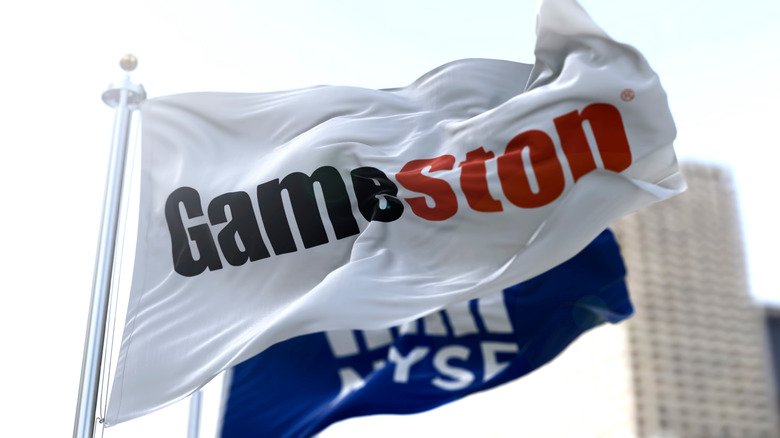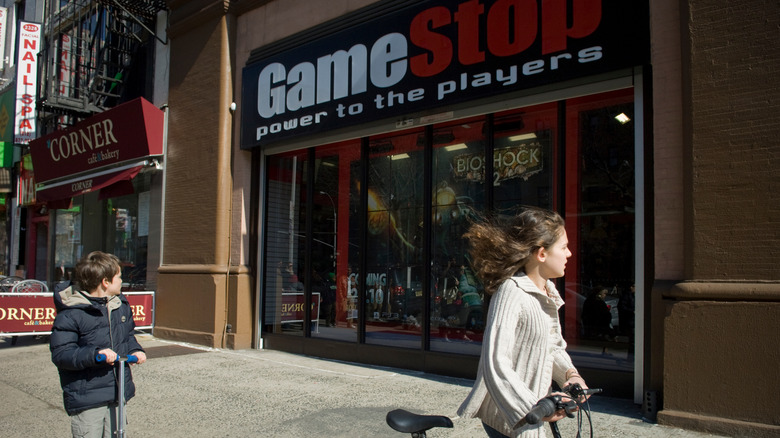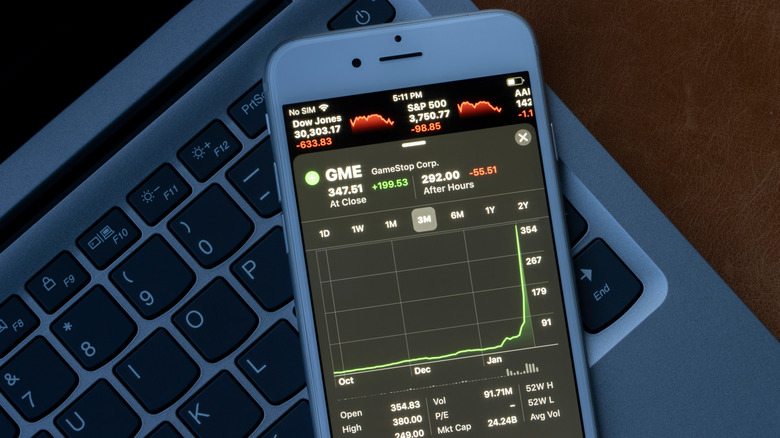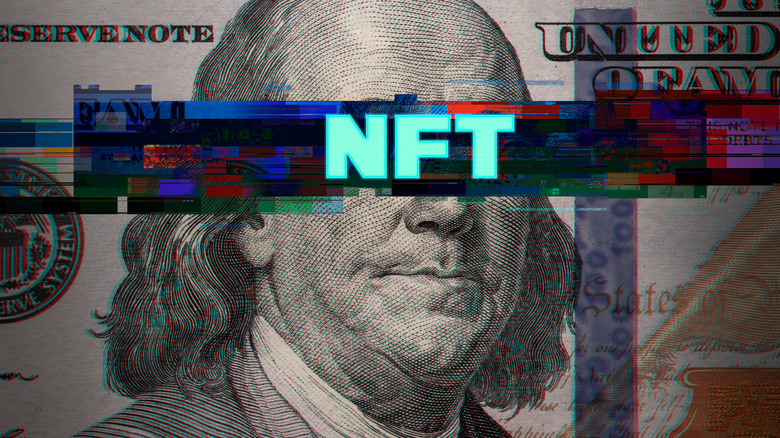GameStop Looks Nothing Like It Did 10 Years Ago
The gaming space has always been a unique part of the media world. Consuming digital content through streaming services is the norm these days, but it wasn't always this way. A decade ago, the world was climbing back out of the massive recession spawned by a housing market collapse (via Investopedia) and a fiscal cliff in 2012, according to The Atlantic. The economic and social landscape looked a lot different back then, but some things were kicking into motion that would come to wholly characterize the future.
Netflix experienced a surge in stock valuation moving into 2013, according to Forbes, and by all accounts really hasn't looked back since. Likewise, Spotify launched in the United States in July 2011 (via Fast Company) and has since reduced physical album sales to a mere drizzle.
In hindsight, these changes were inevitable. Yet, gaming is unique in that physical disks carry far more data than audio or video products, and the devices themselves have only recently incorporated the functional storage required to facilitate domination of diskless play.
GameStop reported sales at an all-time high in 2010, according to Forbes, just as streaming services began to command their respective media segments. Yet, GameStop has ostensibly become another casualty of the fast-paced momentum of streaming availability. In May, the company announced that it was launching a crypto wallet (via Yahoo).
Reimagination is part of any brand's journey, but the shift from brick-and-mortar juggernaut to crypto player is particularly fascinating when it comes to GameStop.
GameStop was once a powerhouse physical game retailer
GameStop was founded in 1984 and later acquired by Barnes & Noble in 1999 for $215 million, as rereported by Game Rant. It later went public in 2002. According to GameStop, through the company's SEC disclosures form, there were 4,816 stores in operation in January of 2021. Statista notes that in 2012, U.S. Sales figures were over $6 billion (with another $1.6 billion in Europe), in the decade since, net sales have dropped to $3.4 billion and $789 million, respectively.
Years ago, GameStop was the singular market dominator in U.S. physical games sales, and young people would flock to malls and other retail locations to get their hands on the next great gaming release. Console games were a particular strength for GameStop and any other retailer scraping out sales in this industry. Consoles like Xbox One and PlayStation 4 came out in 2013, and these early 2010s were some of the most iconic for gamers. Consoles were pushing what could be accomplished to their extremes, and consoles could render amazing graphics and perform immense feats of technical mastery. Yet, with still-limited storage capacity, gaming remained somewhat immune to the tidal wave of streaming and cloud-based supremacy that had effectively taken over audio and visual media formats.
The 2021 short-squeeze fundamentally transformed what GameStop is and could be
GameStop stock has seen a steady retraction since a spike in pricing at the tail end of 2013 (via Yahoo). The share price had remained in a tight range between about $5 and $7.50 per share prior to this movement, and for much of the time after the 2013 surge. Steadily dropping even farther in 2018 and 2019 alongside flagging in-store sales, the brand looked destined for the same fate as Blockbuster and other media titans of a bygone consumer habit. Yet, the Coronavirus pandemic created a unique circumstance for young investors and indirectly led to an amazing turn of events that saw a successful short-squeeze send the price flying into the stratosphere. The short-squeeze came as a result of young investors pushing against a short sale by hedge funds and other institutional investing outlets. The share price was minuscule, hovering around a dollar each by that point, and soaking up thousands of shares with the COVID stimulus funding proved to be a unique opportunity to buy into a potentially massive opportunity with little risk considering the financial and political backdrop of the time.
GameStop was already lumbering toward new business models to fend off obsolescence, focusing on competitive gaming, new initiatives, and collectible sales that expanded the store's offerings beyond the games themselves (via City Index). The short-squeeze reimagined the cultural significance of GameStop and has reignited the brand's image and potential.
This year's launch of a GameStop crypto wallet marks a shift in where the company is headed
This year marks another new direction for the GameStop brand. In an effort to reinvent itself for a media environment that has largely shifted away from physical disks just as other formats did five to ten years ago, GameStop is launching a crypto and NFT platform. According to Yahoo, GameStop is working toward a new image and functionality as a technology brand rather than the gaming retailer that it once operated solely as. In the present, the GameStop crypto brand is in a beta launch, but this is sure to change quickly as the company looks toward future opportunities in a crypto market that is highly mobile and continuing to innovate and command immense investment power (with multiple capital investments breaking at any given moment, via Investing).
GameStop's NFT marketplace might be the most interesting aspect of this shift. Its technology is built in partnership with Immutable X, according to Yahoo. The future is uncertain for GameStop, with this dramatic turn in business focus remaining in the testing and development stages. However, one thing is certain, the continued versatility and unique cultural history of the brand will continue to power an exciting ride for anyone with their eye on the company, gaming, and the crypto space. With Web3 promising a uniquely commanding experience for gamers and web users out in the future, GameStop might factor somewhere central in the world of crypto development.



